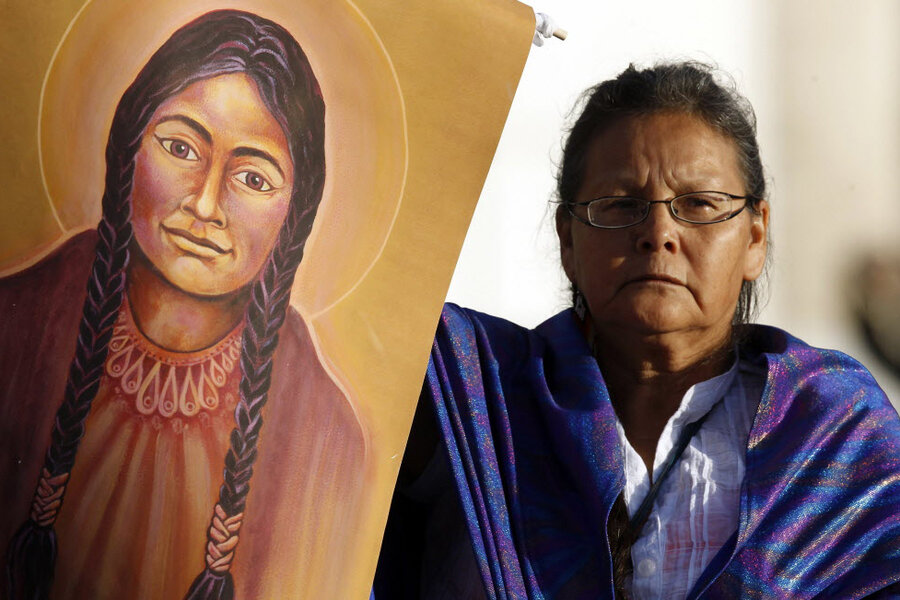Pope names 'Lily of the Mohawks' first Native American saint
Loading...
| Vatican City
Pope Benedict created seven new saints on Sunday including the first Native American to be canonised, as the Roman Catholic Church reaches out to its global flock to rebuff encroaching secularism.
The celebration of figures who had suffered to promote the faith comes as the Church begins a drive to reclaim flagging congregations in former strongholds in the face of sex abuse scandals and dissent against Church teachings.
Thousands of pilgrims from around the world converged on St. Peter's Square to witness the ceremony recognising the saints, who included Kateri Tekakwitha, a sixteenth-century convert known as "Lily of the Mohawks."
The crowd included hundreds of pilgrims from the United States' 2.5 million-strong Native American population, of whom 680,000 are estimated to be Catholic, a legacy of the success of early missionaries in converting indigenous people in America.
Many pilgrims waved the flag of the Philippines and held portraits of Pedro Calungsod, killed doing missionary work in 1672, who became the second Filipino saint. Others in traditional German dirndl dresses and leather shorts cheered as Pope Benedict welcomed them in his native tongue.
Portraits of the new saints, including French Jesuit Jacques Berthieu, Italian priest Giovanni Battista Piamarta, the Spanish nun Carmen Salles y Barangueras, and German laywoman Anna Schaffer hung from the marble facade of St. Peter's Basilica, and the crowds cheered as each name was called.
"Saint Kateri, Protectress of Canada and the first Native American saint, we entrust to you the renewal of the faith in the first nations and in North America! May God bless the first nations!" Pope Benedict said in his homily, in which he alternated between French, English, German and Italian.
Saint Kateri, born in 1656 in what is now New York to a Mohawk father and an Algonquin mother, impressed missionaries with her devotion. This began a centuries-old tradition of veneration culminating with her canonisation.
Dressed in fringed and beaded regalia with an arctic fox fur collar, Judy Arnouts of the Odawa tribe, whose native name is Bedaben, meaning Blessing of New Day, said the canonisation of Saint Kateri was a boost to the Native American community.
"Our cultural and spiritual history needs to be upheld, celebrated and taught to our younger generation," said Arnouts, 68, who had travelled from Michigan to present Pope Benedict with a wood-burned cedar log she had made, a traditional craft.
Aida and Romy Javier, wearing Hawaiian garlands of flowers around their necks, were among scores of pilgrims who had travelled from the island to see the canonisation of Marianne Cope, a German-born woman who founded a hospital in Hawaii in the 19th century.
"I will tell my children and grandchildren about this day," Aida Javier said, holding a portrait of Saint Marianne. "The reason they are called saints is because they suffered for the sake of Christianity and they didn't want to renounce the faith. This is important because it will make our faith stronger."
Five of the seven saints were important figures in the Church's history of missionary work, pointing to a theme for the Church as it enters what Pope Benedict has proclaimed a "year of faith", aimed at countering the rise of secularism.
The canonisation ceremony came in the middle of a three-week meeting of hundreds of bishops at the Vatican on the theme of the "New Evangelisation", an effort to rejuvenate the Church and win back lapsed believers.







